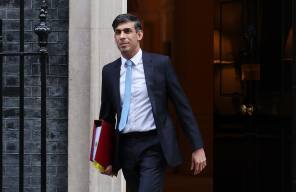
With the UK economy back to pre-financial crisis size and Ireland’s picking up too, it took only a little good news from state-controlled Royal Bank of Scotland to lift the market’s spirits further. The bank may be top of the leader board this morning, but can – and should – the euphoria last?
Possibly. Improving asset quality was behind the big leap in RBS’s much improved pre-released first-half pre-tax profits update. It expects it to be £2.7bn, almost double those of a year earlier, with most of the gain in the second quarter, FastFT reports.
That much was to be expected as stress on borrowers lifts. RBS’s impairments fell by nearly £1.9bn to £269m in the first half – across the bank, including its Ulster Bank unit. Better still, RBS expects bad loan charges to be about £1bn for the full year.
Nor do bad banks uniformly live up to their name – given time and hard work by recoveries teams, their assets can come good again. Higher than expected revenue its own bad bank iteration - RBS Capital Resolution (RCR) – was behind the better than expected improvement in overall revenue.
It gets better. RBS said that RCR could ultimately cost £1.5bn less than it initially forecast, when it put the likely cost up to the end of 2016 at between £4bn-£4.5bn.
There was solid progress on other fronts too. Costs continued to fall – by 8 per cent from a year earlier at the half year, and by an annual 11 per cent in the second quarter, showing RBS’s momentum in cutting costs. With a cost-to-income ratio of 71 per cent, they need to fall.
Note too that there was a $283m net fillip from the sale of the Illinois branch network of its Citizens Financial Group in the US, which is under the hammer.
But the euphoria could fizzle out quickly. RBS still faces what it describes as “significant” conduct and litigation. Yet more cash was set aside to settle claims for mis-sold payment protection insurance and interest-rate swaps sold to small businesses. Uncovered litigation could be as much as £4.1bn, on Credit Suisse estimates - enough to shave a percentage point off RBS’s common equity tier one capital.
It still has a giant balance sheet, with risk-weighted assets of £392bn at end-June, down £22bn over the previous quarter.
The faster it deleverages, the better. RBS’s common equity tier one ratio climbed by 70 basis points over the quarter to 10.1 per cent – better than many of its large European peers, making its targeted ratio of 11 per cent by end-2015 plausible
RBS could trade at book value if it can keep up the momentum and fend off interference by policymakers. So far chief executive Ross McEwan has proved more adept than his predecessor at fending off those speaking for taxpayers’ 81 per cent stake.
But he must still negotiate the shifting hurdles of conduct and litigation claims – potentially, a big enough number to dampen the euphoria.



